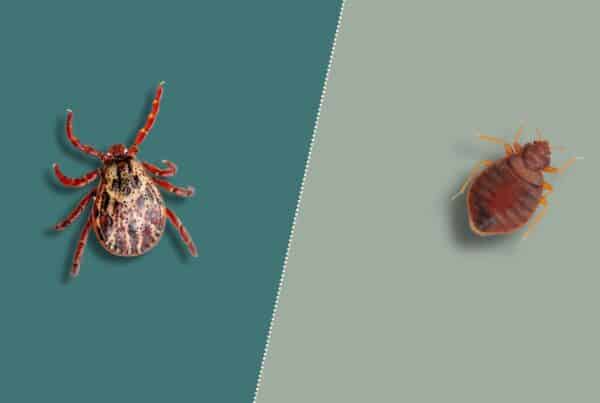Rats, common backyard pests that seem to be everywhere, have long been known to carry various diseases – but what about rabies? Is it possible that these furry little pests could be harboring one of the most feared viruses in the world?
In this article, we’re going to explore all you need to know to protect yourself and your home from the risks rats might bring. When we conclude, you’ll know when it’s necessary to act, and when a rat can be left alone.
Understanding Rabies
Rabies is a serious virus that attacks the brain and nervous system of mammals, including humans, pets, and wild animals. The disease comes from the rabies virus, which spreads through the saliva of an infected animal, usually via a bite or scratch. Once symptoms appear, rabies is nearly always fatal, making it one of the most dangerous diseases in the world.
The scary part about rabies is how it affects the body. After exposure, the virus travels through the nerves to the brain, where it multiplies and causes inflammation. This can lead to a range of frightening symptoms, such as aggression, confusion, hallucinations, and even paralysis. If left untreated, rabies can cause a painful death within a matter of days.
But here’s the good news – rabies is preventable. Just by understanding how the virus spreads and taking the right precautions, you can greatly reduce your risk of exposure.
So, while rabies is a serious threat, it’s not something that should keep you up at night. With the right knowledge and a few simple precautions, you can protect yourself and your loved ones from this deadly disease.

Rats and Rabies
The truth is, while rats can technically contract and spread rabies, it’s pretty rare. Studies have shown that only a small percentage of rats carry the rabies virus, especially when compared to other common carriers. That includes animals like bats, raccoons, and skunks. But why is that?
Well, it turns out that rats have a pretty low susceptibility to the rabies virus. Even if a is around rabies, its immune system is usually strong enough to fight off the infection before it takes hold. Plus, rats tend to live in close-knit colonies, which means they’re more likely to pass diseases among themselves rather than spreading them to other animals or humans.
Of course, that doesn’t mean you should let your guard down when it comes to rats and rabies. While the risk might be low, it’s still possible for a rat to carry the virus and pass it on through a bite or scratch. That’s why it’s always best to err on the side of caution and avoid contact with wild rats whenever possible.
So, what does this all mean for you? Essentially, while rats aren’t the most likely culprits when it comes to rabies transmission, they’re still a potential risk factor.
Signs of Rabies in Rats
So, now that you know rats can carry rabies (even if it’s not very common), you might wonder how to tell if a rat is infected. After all, the last thing you want is to come across a rabid rat in your home or yard!
The tricky thing about rabies is that it can be tough to spot in rats, especially in the early stages. Rats with rabies may not show any obvious signs of illness right away.
As the disease progresses, however, infected rats may start to display some telltale symptoms. These can include:
- Unusual behavior, such as aggression or fearlessness around humans
- Difficulty moving or partial paralysis
- Drooling or foaming at the mouth
- Seizures or tremors
- Vocalizations, such as squeaking or chirping
Keep in mind that these symptoms can also be caused by other health issues, so it’s not always easy to diagnose rabies based on behavior alone. Plus, some infected rats may not show any symptoms at all before dying from the disease. If you do come across a rat that you suspect might have rabies, the best thing to do is keep your distance and contact a professional pest control service right away.

Preventing Rabies in Humans
While the chances of getting rabies from a rat are pretty low, it’s still important to know how to protect yourself and your loved ones from this deadly disease. After all, rabies is nothing to take lightly – once symptoms appear, it’s almost always fatal.
So, how exactly can humans contract rabies from rats? The most common way is through a bite or scratch from an infected animal. If a rabid rat manages to break your skin with its teeth or claws, it can transmit the virus directly into your bloodstream.
Another potential risk factor is coming into contact with a dead rat infected with rabies. While this is less likely than a bite or scratch, it’s still possible to contract the virus if you handle the animal without proper protective gear. Fortunately, there are plenty of steps you can take to reduce your risk of rabies exposure!
Prevention to Consider
- Vaccinate your pets against rabies
- Avoid contact with wild animals, including rats, whenever possible
- If you’re bitten or scratched by any animal, wash the wound thoroughly with soap and water. Then, seek medical attention right away
- Consider vaccinations against rabies. Especially if you work in a high-risk occupation or travel to areas where the disease is more common
- Keep your home and yard clean and free of debris that could attract rats or other wild animals
- Seal up any gaps or cracks in your home’s exterior to prevent rats from getting inside
When you follow these simple guidelines, you can greatly reduce your chances of coming into contact with a rabid rat or any other infected animal. If you do suspect that you or someone you know has been exposed to rabies, don’t hesitate to seek medical attention right away. With prompt treatment, it’s possible to prevent the disease from taking hold and causing serious harm!
When to Call a Professional
Sometimes even the most cautious among us can find ourselves facing a potential exposure.
First and foremost, if you’ve been bitten or scratched by any animal (including a rat), you should wash the wound thoroughly with soap and water for at least 15 minutes. This can help reduce your risk of infection and remove any saliva or other contaminants from the wound site.
Next, you should contact your doctor or local health department right away. They can assess your risk of rabies exposure and recommend the appropriate course of action. This may include a series of rabies vaccines to prevent the disease from taking hold.
Even if you haven’t been bitten or scratched, seek medical advice if you suspect contact with a rabid animal. In some cases, your doctor may recommend a course of rabies vaccines as a precautionary measure. This is especially true if you work in a high-risk occupation or have a weakened immune system.
Of course, prevention is always the best approach when it comes to any pest or disease. If you’re dealing with a rat infestation in your home or yard, contact a professional right away.
Final Thoughts
When it comes to whether rats and other animals carry rabies, knowledge is power. By understanding the risks, recognizing the signs, and taking the right precautions, you can help protect yourself and your home.
While the chances of getting rabies from a rat are low, it’s still important to stay vigilant and take action if you suspect an exposure. Whether that means washing a wound thoroughly, seeking medical attention, or maintaining vigilance with maintenance. If you have questions about an existing rat population or want to get professional pest control for your home, schedule online with Inside and Out Pest Services in Jacksonville, FL, and surrounding areas.



